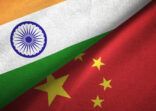The growth prospects of emerging markets are more encouraging than those of developed markets because they are at an earlier stage of the economic cycle,” Ashley told FSA.
“Emerging market equity is still going to be very attractive next year and not simply because it has been a good trade this year.”
Ashley belongs to the in-house research unit at GSAM that focuses on generating the top-down view on market situation and overall investment landscape. Although the team does not participate in making investment decisions in portfolio construction, it has substantial input into decisions of the portfolio managers.
Indian equities stand out as an opportunity within emerging markets, according to Ashley.
“Even though Indian equities are no longer compellingly cheap, we don’t see them as constrained on the upside,” he said. “There is still considerable room for growth under the resilient global market.”
In the medium-to-long term, India’s relatively young population combined with positive results from some of the structural reforms should drive economic growth, Ashley said.
India’s approval of a uniform Goods and Services Tax is expected to result in productivity gains and lower costs of doing business, while making tax collection more efficient.
The government is also planning to a $32bn recapitalisation of public sector banks, which should increase transparency of bank loan books. In a note to clients, Avinash Vazirani, manager of the Jupiter India Select Fund, called it an important step in forcing banks to be more transparent. “It should also enable a `reset’ of the credit cycle, meaning banks will have a greater willingness to lend, making credit far more accessible to businesses and consumers alike.”
Nonetheless, China, which makes up about 40% of the MSCI Emerging Markets Index, is a key risk, Ashley said. “The rapid accumulation of credit in the non-financial corporate sector in China warrants careful monitoring.”
GSAM is encouraged by policy measures to address the credit imbalance. But given China’s out-sized importance to emerging markets and also to the global economy, the potential for anything to impact adversely on China’s growth trajectory “should be top of mind for investors”, he said.
Barings, in its latest report, shares a similar outlook on China credit. “The big risks emanate from Asia where the gravitational pull of lower growth, especially as credit conditions dry up, has thus far been avoided. China has been a big beneficiary of the low interest rate environment as debt has been easier to roll over. Rising bond yields could change this.”
Central bank impact
In 2018, GSAM’s Ashley expects investment to be more challenging than in 2017 as the monetary policies of central banks change.
Over the past years, central banks in developed markets have bought assets, cut interest rates and injected liquidity into the markets, driving broad-based returns across the majority of asset classes.
However, the policies are being reversed in the US and gradually in Europe, raising concerns about the sustainability of the developed market run, he said.
Timing and sequencing of the policy reversal are key. “We believe central banks are very cautious and mindful, but there is a risk of a potential misstep that investors have to take into account,” he added.
Ashley added that his firm sees US equities as fully valued and presenting limited growth potential, “unless there is a material improvement in earnings”.
He said he did not want to send a doom-and-gloom message. “Diversification is the cornerstone helping to tackle these challenges. Investors have to be more selective. There needs to be a greater divergence in asset allocation, and having a well-informed macroeconomic view is going to matter a lot more.”
GSAM manages two emerging market equity mutual funds. The chart below shows three-year performance of the Emerging Market Equity Portfolio against the benchmark, the MSCI Emerging Markets Index, and the sector average of other emerging market equity funds sold in Singapore. Another fund is Emerging Markets CORE® Equity Portfolio.


















